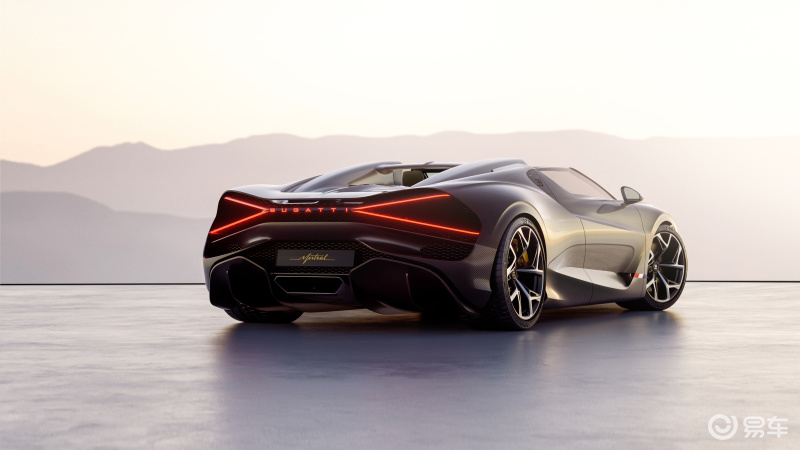On August 20, Beijing time, Bugatti W16 Mistral was officially released. As a convertible sports car, the W16 Mistral is equipped with an 8.0L quad-turbocharged W16 engine with a maximum power of 1,600 horsepower. A limited number of 99 units will be sold globally, with a net price of 5 million euros. Deliveries are scheduled to begin in 2024, but the current W16 Mistral quota has been completely sold out. Officials stated that the new car will also become its last road production car equipped with a W16 engine.

The name W16 Mistral is inspired by the Mistral, a dry and cold strong wind blowing from the Rhone Valley, passing through the chic town of Côte d'Azur in southern France, and finally entering the Mediterranean Sea. Officials stated that the W16 Mistral’s existing monocoque structure is not simply cut off above the A-pillar, but is completely customized in terms of design and engineering.


It is reported that the vehicle design is inspired by the Bugatti Type 57 Roadster Grand Raid launched in 1934. The curved windshield surrounds the A-pillar and blends seamlessly with the side windows, creating a "sun visor" effect, suggesting The level of racing performance of the W16 Mistral. The famous horseshoe-shaped grille has been redesigned to become more three-dimensional. The headlights with four light sources on both sides and the X-shaped taillights at the rear are even more highly recognizable.

To keep the sides of the body slim while providing sufficient airflow for the W16, the side oil cooler air intakes are deliberately separated from the engine air intakes, which are now located on the roof and behind the passengers. The two new roof-mounted engine air intakes are a nod to the Type 57 Grand Raid roadster, as well as the Veyron 16.4 Grand Sport, the first open-top Bugatti in modern times.


The function of the X-shaped tail light is to ventilate the side oil cooler through the duct connecting the triangular negative space between the X-shaped beam and the side radiator. As a result, a pressure drop is created between the W16 Mistral's side air intakes and rear air outlets, which will help to most efficiently manage the powerful W16's mid-temperature cooling circuit.

The new ram air intakes behind the headrests were designed with rigorous rollover testing in mind, so each one is made from a custom carbon fiber structure that supports the car in the event of a rollover. the entire weight. This new air intake layout also enriches the driver's W16 experience, emphasizing the deep, powerful roar of the 8-liter engine's air intake when the accelerator is pressed, as well as the valve whistle blown by the four turbochargers when accelerating. A symphony that plays together.


Coming to the interior, the W16 Mistral basically continues the interior styling of the Chiron, with a large number of lightweight titanium alloy and leather materials used in the car. At the same time, the newly designed door panels are made of complex woven leather. In tribute to the W16 Mistral's outstanding predecessors, the gearshift device is machined from a solid aluminum block and is inlaid with Rembrandt Bugatti's famous "Dancing Elephant" sculpture, made of wood and amber. Become.

In terms of power, the new car is equipped with an 8.0L quad-turbocharged W16 engine with a maximum power of 1,600 horsepower. Mate Rimac, CEO of Bugatti Rimac said: “With the W16 Mistral we are continuing the tradition of Bugatti roadsters, each unparalleled in design, performance and rarity, which goes back to Bugatti’s origins. Period. Bugatti has always been associated with the purity of open-top driving, so even though the W16 engine's mission ended with the W16 Mistral, we still have the legacy of Ettore more than a century ago. The legacy of Bugatti’s first open-top sports car is so precious.”

According to data from Bitauto App’s “Brand Popularity List”, Bugatti has an average daily attention of 8,676, ranking 147th. If you need more data, please go to Bitauto App to view.
Editor: Qin Qingbao
